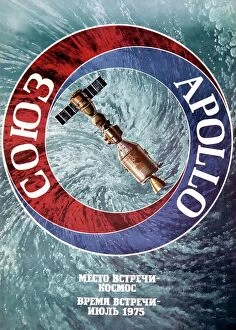Astp Collection
The Apollo-Soyuz Test Project (ASTP
All Professionally Made to Order for Quick Shipping
The Apollo-Soyuz Test Project (ASTP) was a groundbreaking mission that marked the first international human spaceflight collaboration between the United States and Soviet Union. In 1972, President Nixon, accompanied by Dr. James Fletcher and the Apollo 16 Astronauts, unveiled a poster showcasing this historic endeavor. As preparations intensified, Nixon received a comprehensive briefing on the Apollo Command Module in 1974. The dedication of both nations to this project was evident as Soviet crew member Valeriy Kubasov meticulously inspected equipment inside. The Saturn 1B booster played a crucial role in ensuring the success of the American mission. Its second stage stood tall at Cape Canaveral, ready to propel humanity into uncharted territory. In an iconic image captured at Cape Canaveral, both American and Soviet crews proudly stood side by side, symbolizing unity amidst Cold War tensions. A model of docked Apollo and Soyuz spacecraft served as a visual representation of their shared goals. KSC Director Lee Scherer facilitated communication between nations during this momentous occasion. He escorted a Soviet interpreter and Vladimir Shatalov, fostering understanding across language barriers. With anticipation building up, the docking module and Apollo spacecraft were prepared for launch under Florida's sunny skies. As liftoff approached, excitement filled the air as ASTP prime crewmen Donald Slayton and Thomas Stafford geared up for their extraordinary journey. Inside Soyuz-19 spacecraft Leonov and Kubasov eagerly awaited their rendezvous with history. Together they embarked on an unprecedented voyage that would forever change space exploration. The ASTP Saturn IB launch vehicle roared to life at Kennedy Space Center (KSC), propelling these brave astronauts towards destiny's embrace. Their courage paved the way for future collaborations among nations beyond Earth's boundaries. Through determination and cooperation transcending political differences, ASTP became an enduring testament to mankind's ability to unite in pursuit of knowledge beyond the stars.








